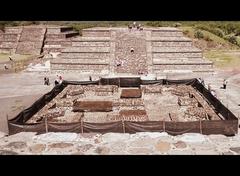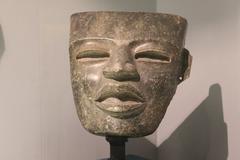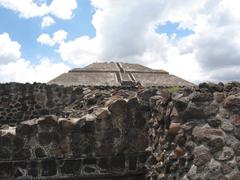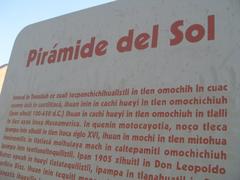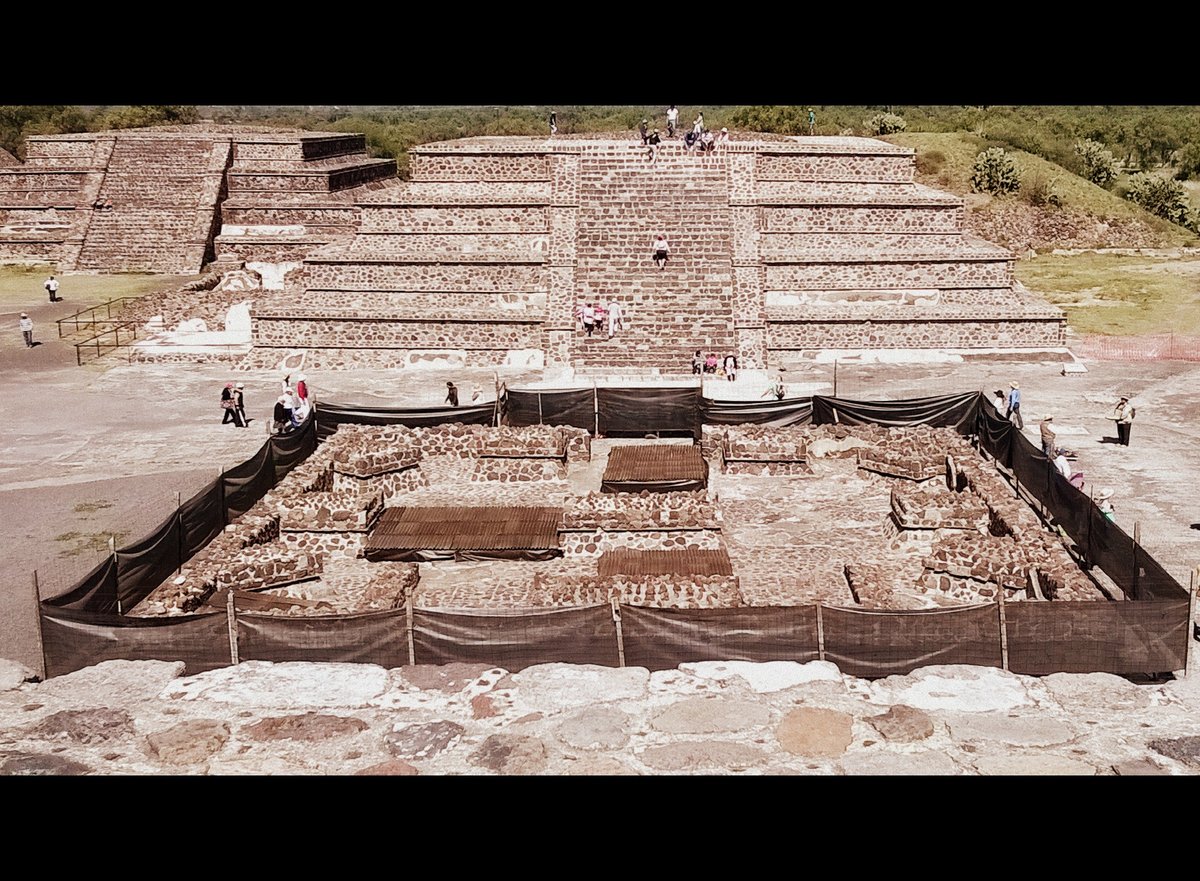
Teotihuacan Visiting Hours, Tickets, and Guide to Mexico’s Historical Sites
Date: 14/06/2025
Introduction to Teotihuacan
Teotihuacan, located approximately 40 kilometers northeast of Mexico City, is one of the most significant archaeological and historical sites in the Americas. Known as the “City of the Gods,” Teotihuacan was a center of urban, religious, and artistic innovation in ancient Mesoamerica. At its peak between 150 BCE and 650 CE, the city supported a diverse and cosmopolitan population, making it one of the largest urban centers of the ancient world (World History Encyclopedia; History Tools). Today, Teotihuacan’s monumental pyramids, vibrant murals, and advanced urban layout attract millions of visitors annually and offer a window into a civilization that left a lasting imprint on later cultures, including the Aztecs and Maya.
This guide provides comprehensive visitor information, including practical details on visiting hours, ticketing, accessibility, and travel tips, as well as a detailed look at the site’s major monuments and cultural significance. Whether you’re a history enthusiast or a first-time traveler, use this guide to make the most of your journey to Teotihuacan.
Contents
- Origins and Urban Development
- Cultural Significance and Influence
- Major Monuments and Archaeological Features
- Teotihuacan in Mesoamerican History
- Decline and Legacy
- Ongoing Archaeological Research
- Essential Visitor Information
- Visiting Hours
- Ticket Prices
- Guided Tours
- Accessibility
- Travel Tips
- Transportation
- Frequently Asked Questions (FAQ)
- Visuals and Media
- Further Reading and Links
- Conclusion and Visit Tips
Origins and Urban Development
Teotihuacan’s rise began between 150 BCE and 200 CE in the Basin of Central Mexico, where its founders benefited from fertile land and abundant spring water. The city’s early urbanization featured an extensive grid layout, with the Avenue of the Dead at its core, and sophisticated irrigation systems that supported both agriculture and population growth (World History Encyclopedia; History Tools). At its height, the city covered over 20 square kilometers and housed an estimated 125,000 to 200,000 inhabitants, making it a marvel of ancient engineering and urban planning (Mexico Historico).
Cultural Significance and Influence
Teotihuacan was not only a metropolis but also a center of religious and political power. The name “Teotihuacan,” given by the Aztecs long after the city’s decline, means “Place of the Gods.” The city’s original name remains a mystery. Its multicultural population included people from diverse regions such as Oaxaca, the Gulf Coast, and the Maya area (Harvard Museums). Teotihuacan’s artistic and architectural styles, religious iconography, and urban innovations influenced later civilizations throughout Mesoamerica (Mexico Historico).
Major Monuments and Archaeological Features
Avenue of the Dead
The Avenue of the Dead (Calzada de los Muertos) is the main axis of Teotihuacan, stretching over 2 kilometers and lined with ceremonial platforms, plazas, and the site’s most famous pyramids (History Tools). It served as the city’s ceremonial and processional spine.
Pyramid of the Sun
The Pyramid of the Sun is Teotihuacan’s largest structure and ranks among the world’s great pyramids. Built around the second century CE, it stands 65 meters (216 feet) tall and covers a base of over 225,000 square meters (Mexico Historico). It was likely a primary religious center and is believed to align with astronomical and calendrical events (Live Science).
Pyramid of the Moon
The Pyramid of the Moon, at the northern end of the Avenue of the Dead, is slightly smaller but equally significant. It was constructed in several phases and used for rituals including offerings and sacrifices (Wikipedia). Visitors can climb partway up the pyramid for panoramic views of the ancient city.
Temple of the Feathered Serpent (Quetzalcoatl)
Located within the Ciudadela, this is the third-largest pyramid at Teotihuacan and features elaborate stone carvings of the feathered serpent deity, Quetzalcoatl. The temple, dating to the third century CE, played a central role in state rituals (World History Encyclopedia).
Palace of Quetzalpapálotl
Near the Plaza of the Moon, this palace complex is known for its intricately carved pillars and murals depicting the “Quetzal Butterfly.” It offers insights into elite life and religious symbolism (Lonely Planet).
Residential Compounds and Murals
Teotihuacan’s apartment compounds housed extended families and craft specialists, reflecting social complexity. The site’s murals, featuring gods, animals, and rituals, are among the best-preserved in ancient Mesoamerica (Harvard Museums; Mexico Archeology).
Site Museum (Museo del Sitio)
Located south of the Pyramid of the Sun, the site museum displays artifacts, murals, and scale models, providing essential context for understanding Teotihuacan’s history (Lonely Planet; Road Affair).
Unique Experiences
- Hot Air Balloon Rides: Early morning flights provide breathtaking aerial views of the pyramids and Avenue of the Dead (The Crazy Tourist).
- Light and Sound Show: On select evenings, the site hosts a multimedia show that illuminates the pyramids (Visitar Teotihuacan).
Teotihuacan in Mesoamerican History
Teotihuacan flourished during the Classic Period (150–650 CE), exercising political and economic influence across Mesoamerica through military power, tribute, and trade. Its distinctive talud-tablero architectural style and religious motifs, especially the worship of the Feathered Serpent, were adopted by later civilizations (World History Encyclopedia; Mexico Historico).
Decline and Legacy
Teotihuacan’s decline began around 550 CE, with the city largely abandoned by 750 CE. The causes are debated and may include social unrest, environmental pressures, and natural disasters such as earthquakes (ArchaeologyMag). The Aztecs later revered Teotihuacan as a sacred origin place, and its influence persisted in art, urbanism, and mythology (Wikipedia). Today, Teotihuacan is a UNESCO World Heritage Site and Mexico’s most visited ancient complex (World History Encyclopedia).
Ongoing Archaeological Research
Recent excavations continue to reveal new aspects of Teotihuacan’s society and history, including the discovery of outlying villages, secret tunnels, and evidence of advanced agricultural and craft production (Ancient Origins; Travel Lemming). The site is a living laboratory for understanding ancient urbanism and cultural exchange.
Essential Visitor Information
Visiting Hours
- Archaeological Zone: Open daily, typically from 9:00 AM to 5:00 PM. Last entry is at 3:00 PM to allow for sufficient exploration (Destinationless Travel).
- Museum: Generally follows site hours but may close slightly earlier.
Ticket Prices
- General Admission: 80–95 MXN (about $5–$6 USD) per adult. Children under 13, seniors, students, teachers, and people with disabilities (with valid ID) may receive discounts or free entry (Visitar Teotihuacan).
- Free Entry: Mexican nationals and residents on Sundays.
- Camera Permit: 45 MXN for video cameras; professional equipment requires authorization.
How to Buy Tickets
- At the entrance (cash preferred; credit cards not always accepted).
- Online in advance for skip-the-line access (Visitar Teotihuacan).
Accessibility
- The site has uneven terrain and many steps. Some plazas and the museum are wheelchair accessible, but access to the pyramids is limited.
- Visitors with mobility concerns should plan ahead and consult with staff for assistance.
Guided Tours
- Local guides are available at the entrance for a negotiable fee.
- Group and private tours can be booked in advance and often include transportation from Mexico City (Destinationless Travel).
Travel Tips
- Best Time to Visit: Arrive at opening (8:00–9:00 AM) for cooler temperatures and fewer crowds. The dry season (November–April) is ideal.
- What to Bring: Sun protection (hat, sunscreen), water, cash, comfortable walking shoes, and proof of ID for discounts.
- Amenities: Restrooms, snack vendors, souvenir shops, and restaurants (including La Gruta, a cave restaurant) are available near the site.
- Parking: Onsite parking for 45 MXN per car per day.
Getting There
- By Bus: Frequent buses depart from Mexico City’s Autobuses del Norte station labeled “Piramides.” The journey takes about an hour (Destinationless Travel).
- By Car/Uber/Taxi: Convenient for groups or flexible travel; parking is available.
- Guided Tours: Many operators offer day trips, often with early access and a guide (Voyage Mexique).
Frequently Asked Questions (FAQ)
Q: What are the official visiting hours?
A: Daily from 9:00 AM to 5:00 PM (last entry at 3:00 PM).
Q: Where can I buy tickets?
A: At the entrance (cash preferred) or online for convenience and faster entry.
Q: Is Teotihuacan wheelchair accessible?
A: Only certain areas (museum, plazas) are accessible; most pyramids and paths have stairs and rough terrain.
Q: Can I climb the pyramids?
A: Climbing is sometimes allowed but may be restricted for conservation or safety. Check current regulations before visiting.
Q: Are guided tours available?
A: Yes, both on-site and with advance booking; highly recommended for a deeper understanding.
Q: What is the best time of year to visit?
A: November to April (dry season) for pleasant weather.
Q: Are special events held at Teotihuacan?
A: Yes, especially during the spring equinox and for nighttime light and sound shows.
Visuals and Media
- [Insert high-quality images: Pyramid of the Sun at sunrise, aerial view of Avenue of the Dead, Palace of Quetzalpapálotl murals]
- [Interactive map of Teotihuacan highlighting main monuments and facilities]
- [Link to virtual tour video or official tourism multimedia resources]
Alt text for images should incorporate keywords such as “Teotihuacan visiting hours,” “Teotihuacan tickets,” and “Mexico historical sites.”
Further Reading and Internal Links
Conclusion and Visit Tips
Teotihuacan stands as a monument to the creativity, organization, and spiritual depth of ancient Mexico. With its massive pyramids, intricate murals, and advanced city planning, it provides an unforgettable journey into human achievement. To ensure a rewarding visit, plan ahead by checking the latest information on visiting hours and tickets, and consider booking a guided tour.
For up-to-date visitor information, exclusive content, and navigation tools, download the Audiala app. Follow us on social media for travel tips and the latest news about Mexico’s historical treasures. Make your Teotihuacan experience memorable—immerse yourself in the grandeur of the ancient city and leave inspired by its enduring legacy.
Sources and Further Reading
This article is based on reputable resources and the latest travel and archaeological research. For more information, visit the following:
- World History Encyclopedia
- History Tools
- Harvard Museums
- Mexico Historico
- Lonely Planet
- ArchaeologyMag
- Ancient Origins
- Visitar Teotihuacan
- Road Affair
- The Crazy Tourist
- Exploring the Ruins of Teotihuacan
- Destinationless Travel
